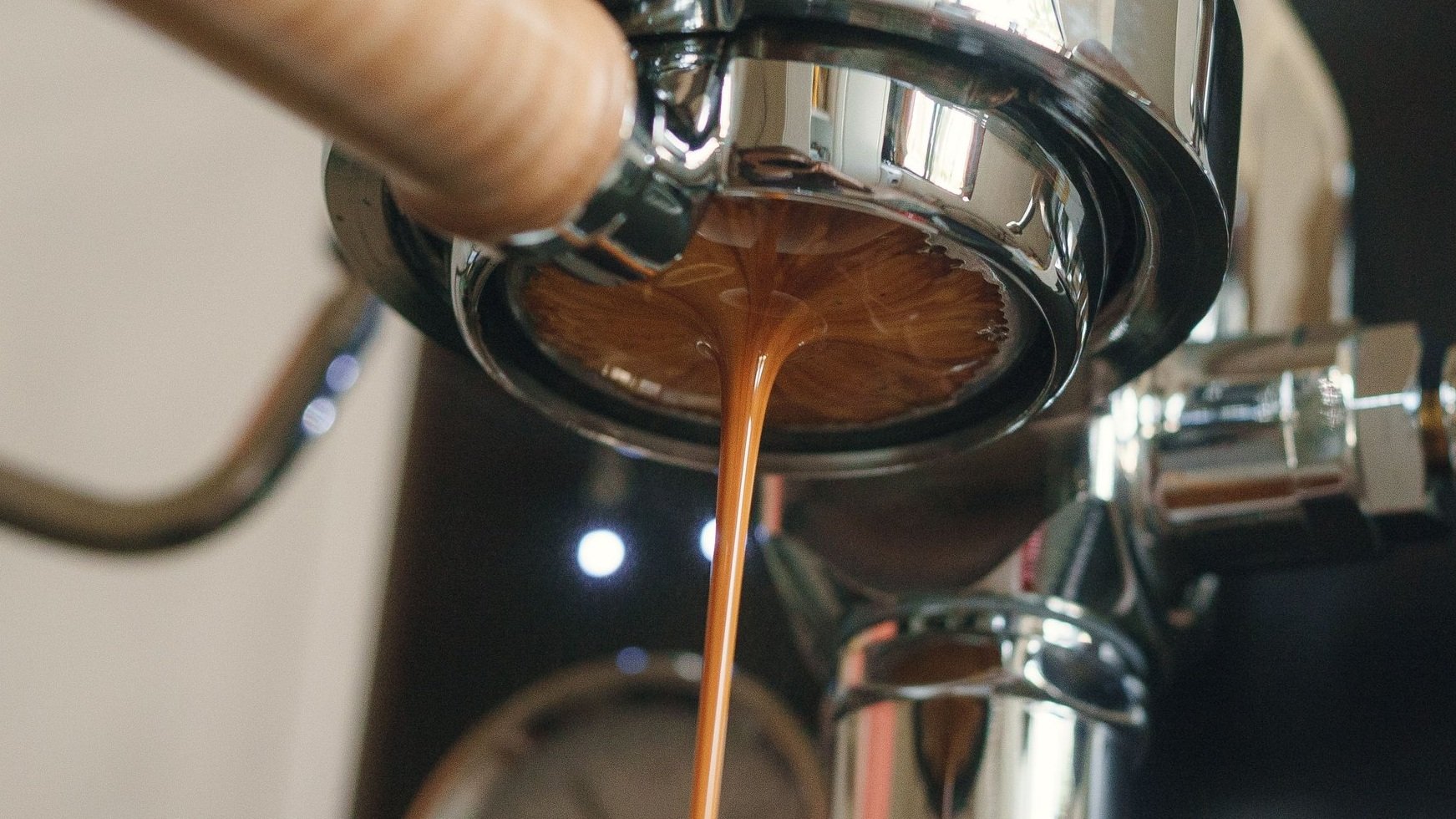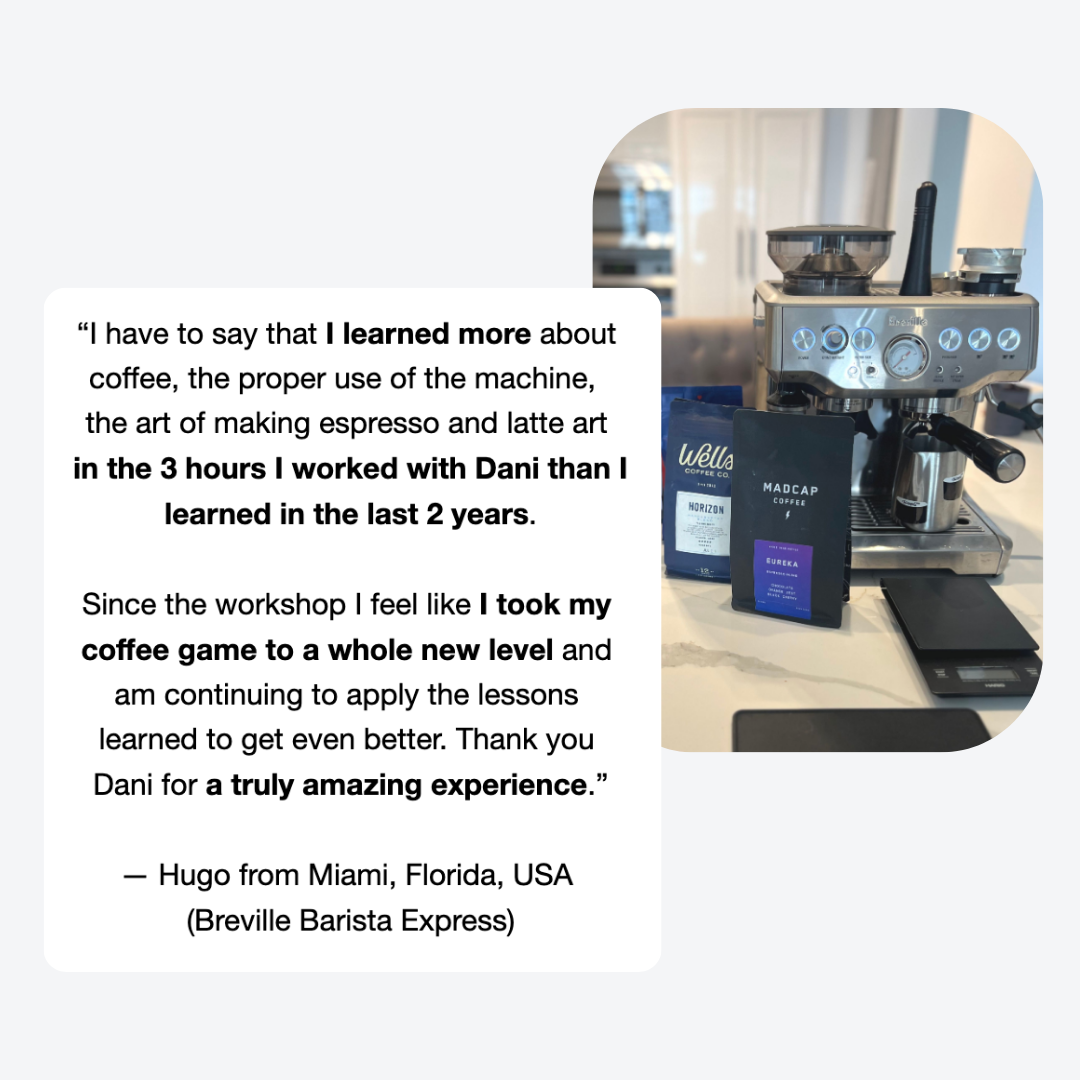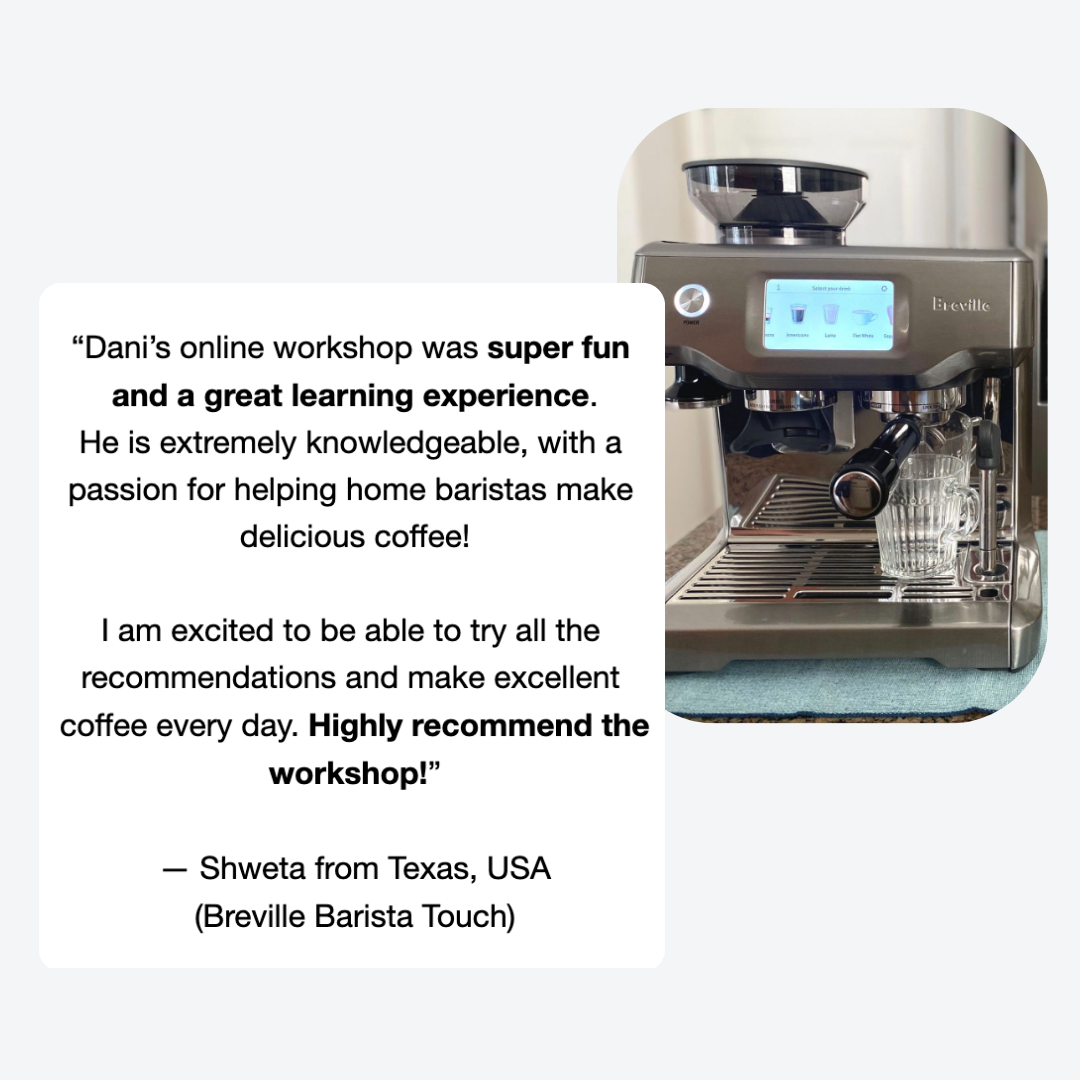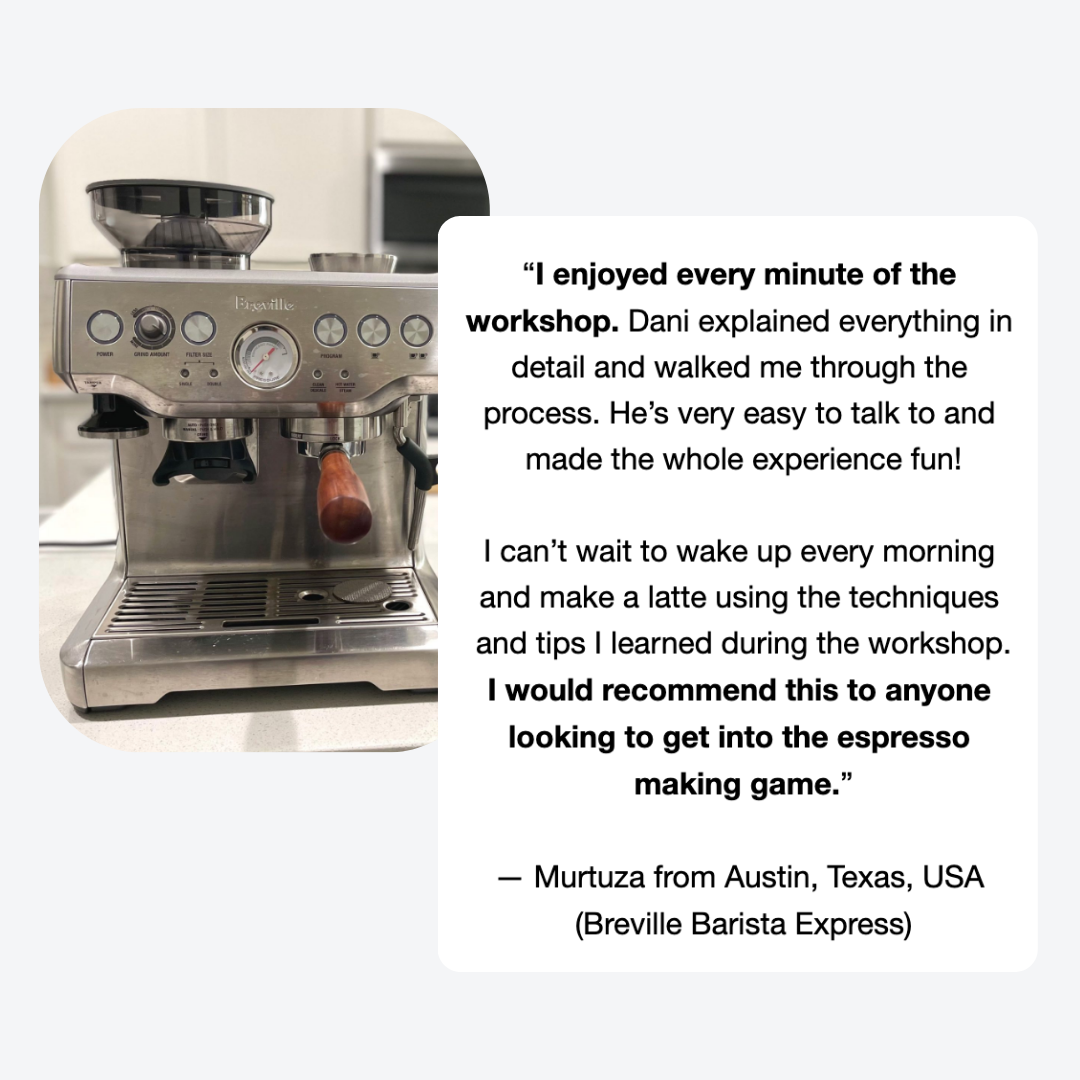How to spot and fix an under-extracted espresso
3 tips for a tastier espresso at home
When you’re in the process of dialing in a new bag of coffee beans, one of the issues you can run into is either under-extraction or over-extraction. Compared with a well made shot of espresso, neither of the two is pleasant to drink. This is especially the case when you’re a beginner home barista, you just got an espresso machine and you’re in the process of learning the ropes of making espresso at home on your own.
The good news is that under and over-extraction can be corrected. By making adjustments to your brewing process, you can enjoy a delicious espresso every day! In this guide we’re focusing on:
what espresso under-extraction is
how to identify it through tasting and
how you can improve your espresso whenever you run into under-extraction
How espresso extraction works
Espresso extraction is essentially the process of pulling flavor out of coffee. When we run hot water through finely ground coffee, we extract its soluble parts and that becomes what we drink as espresso.
When we make espresso, water will extract different compounds from the coffee grounds, each contributing in their own way to the flavor profile of the espresso:
first, acids and fats (acids create the sour flavors in espresso, fats and oils will contribute to its body)
followed by sugars and
towards the end, the plant fibers (these taste dry and bitter)
What is espresso under-extraction?
A good espresso extraction is a perfect harmony of flavors, aromatics and a pleasant acidity. Under-extraction happens when the water hasn’t pulled enough flavor out of the ground coffee i.e. there is still a lot of flavor left in the coffee, that hasn’t been fully dissolved in water. When the espresso is extracted well, it will taste full of flavor and balanced. In contrast, under-extracted espresso will taste sour and thin!
How to spot an under-extracted espresso? Here are 5 signs to look for!
1. Sharp, overpowering sourness
One of the most obvious indicators of under-extracted coffee is a distinct sharp sourness.
Acidity shouldn’t be considered bad. In fact, it’s desirable, we seek brightness and fruitiness in a high quality cup of coffee. The intensity, however, may vary depending on how the coffee has been roasted e.g. a light roast will present a more fruity character and higher acidity compared with a dark roast. That being said, acidity is supposed to be pleasant and balanced, and complement all the other flavors in the espresso, contributing to an overall pleasant sensory experience.
Try to look back and remember tasting an espresso that had a tangy, sharp and aggressive sourness. Or, imagine biting into a citrus fruit. This is how you’re most likely to experience tasting a badly under-extracted espresso. There’s still a lot of flavor left behind that hasn’t been dissolved, therefore the espresso is missing those flavors to balance out the acids (which are the first ones to be extracted).
2. Lacking sweetness
In the same way as above, in an under-extracted espresso the water hasn’t broken down enough sugars to balance out the more sour flavors (i.e. acids) from the first part of the espresso extraction.
3. Thin flavor
The under-extracted espresso doesn’t have the full range of flavors extracted from the ground coffee. Compared with a well extracted espresso, which is more full bodied and syrupy, an under-extracted espresso will not only deliver an unpleasant sourness, but it will also taste watery and thin.
4. Quick and hollow aftertaste
One of my favorite things about drinking a good espresso is having a very pleasant and long lasting aftertaste! An under-extracted espresso doesn’t leave you with a pleasant sensation. Instead of lingering on the palate, the taste fades away almost immediately after drinking it.
5. Light colored crema
Compared with the rich and golden crema of a well extracted espresso, under-extraction will often produce a light colored, thin and quickly fading crema.
The 3 most frequent reasons behind espresso under-extraction and how to fix it
1. Not using enough water
The amounts of both water and coffee used to make espresso are important, and the ratio between the two is what we refer to as the brew ratio.
If, for some reason, the extraction is being stopped too soon, there won’t be enough time to pull all the right flavors. The espresso will therefore be under-extracted: very concentrated, intense in flavors and with an overwhelming acidity.
To fix this, next time let more water run through the coffee (this is especially the case with light roasted coffee). A good starting point to guide yourself after is 1:2 brew ratio (1 gram of ground coffee to every 2 grams of espresso). As an example, this would translate in the following espresso recipe: 18 grams of ground coffee (i.e. the dose) and 36 grams of liquid espresso in the cup (i.e. the espresso yield).
2. Grind size is too coarse
If the grind size is too coarse, the contact time between the ground coffee and the water will be too short, and so the water won’t be able to extract everything in order to produce a balanced shot of espresso.
If you are noticing a very fast extraction and the espresso tastes thin and sour, adjusting to a finer setting should help fix the problem. By grinding finer, the smaller particles will slow down the flow of water through the puck, giving it more time to extract more out of the ground coffee.
3. Water temperature is too low
To make a good shot of espresso, you want the brewing temperature to be within 90 to 96 degrees Celsius (194 to 205 Fahrenheit). From there, you can adjust based on roast profile i.e. dark roasts will benefit from a lower temperature, while light roasts will extract better when using a higher temperature.
Having the right temperature is important, because many of the soluble compounds present in coffee will only extract if the water temperature is within a certain range. So, if your espresso comes out tasting flat, unpleasant and sharp in acidity, temperature may be at fault. It could be that the espresso machine is still heating up and it hasn’t yet reached its ideal brewing temperature.
Some home espresso machines may take a while longer to warm up, so wait for your espresso machine (including the brewing group) to heat up to the correct temperature, including the portafilter and the filter basket. Especially when turning it on in the morning, remember to preheat your espresso machine or run a few blank shots with hot water through the portafilter, before going ahead and making a shot of espresso.
I hope you find these tips helpful and, if you’d like to dive deeper, you may consider our espresso and latte art home barista workshops. Happy brewing!












